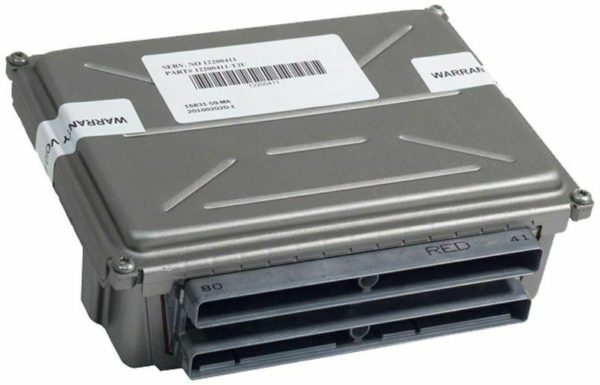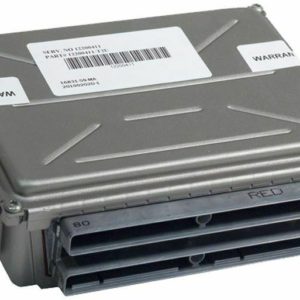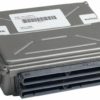Is Your 2003-2007 GM Truck Plagued with Problems?
As a technician with over two decades of experience under the hood, I’ve seen it all. A customer brings in their Silverado, Sierra, or Tahoe with a list of frustrating, intermittent issues: the check engine light is always on, it stalls at red lights, the transmission shifts hard, or worse, it won’t start at all. Nine times out of ten, after ruling out the basics, the diagnostic trail leads straight to a failing Powertrain Control Module (PCM). This module is the brain of your engine and transmission, and when it starts to fail, it can cause chaos throughout your vehicle’s systems.
Common Symptoms of a Failing PCM
If your truck is experiencing any of the following, a faulty PCM is a very likely cause. I’ve personally diagnosed hundreds of these GM trucks where a new module was the final fix.
- ✔ Persistent Check Engine Light (CEL) with communication or processor fault codes (like P0601, P0606).
- ✔ Intermittent engine stalling, stumbling, or misfiring that you can’t seem to track down.
- ✔ Harsh, erratic, or delayed automatic transmission shifting.
- ✔ A sudden, unexplained drop in fuel economy.
- ✔ A frustrating no-start condition where the engine cranks but won’t fire up.
- ✔ False anti-theft system warnings or starter disablement.
The Direct-Fit Solution: A VIN-Programmed 2003-2007 Silverado 2500 PCM
Don’t just replace the part; fix the problem for good. This isn’t just a generic computer pulled from a shelf. We take this genuine OEM-spec PCM, part number 12602802, and flash it with the latest official GM software updates specifically for your truck’s Vehicle Identification Number (VIN). This ensures that all factory operating parameters for your specific engine, transmission, and emissions equipment are loaded and correct. You get a module that is truly plug-and-play, saving you a costly trip to the dealership for programming.
Expert Pro Tip from a 20-Year Veteran Technician
Before you install your new PCM, take five minutes to inspect the electrical connectors and the main engine wiring harness. On these GM trucks, the PCM is often located under the battery tray. Over the years, battery acid can leak and corrode the terminals and wiring, causing intermittent issues that can mimic a bad PCM. I’ve seen dozens of cases where simply cleaning the connectors with a wire brush and contact cleaner solved the problem or, more importantly, prevented the new module from failing prematurely. A few minutes of prevention can save you hours of frustration.
Simple, Straightforward Installation
You don’t need to be a master mechanic to complete this job. With basic hand tools, you can get your truck running right again in your own driveway.
- Safety First: Always disconnect the negative battery terminal and secure it away from the post.
- Locate the PCM: On most 2003-2007 Silverado, Sierra, and SUV models, the PCM is located in the engine bay, on the driver’s side, often under or next to the battery tray.
- Disconnect the Harness: Carefully release the locking levers or tabs on the electrical connectors. They should unplug without excessive force. Never pry on them.
- Remove the Old Module: Unbolt the faulty PCM from its mounting bracket.
- Install the New Module: Secure your new, VIN-programmed PCM onto the bracket.
- Reconnect Everything: Plug the wiring harness connectors back in until they click and lock into place. Reconnect your negative battery terminal.
- Perform Security Relearn: In some cases, a simple 10-minute key-cycle procedure is needed for the security system to recognize the new PCM. This procedure is simple and we can provide instructions if needed.
Guaranteed Compatibility
This module is a direct replacement for a wide range of popular GM trucks and SUVs. It is fully compatible and interchangeable with the following service numbers: 89017750, 12582605, 12589463, 12602802, 89017734, and 28042802. Please verify your part number or consult the detailed fitment list to ensure this is the correct part for your vehicle. Getting the right part, programmed correctly, is the key to a successful repair.


